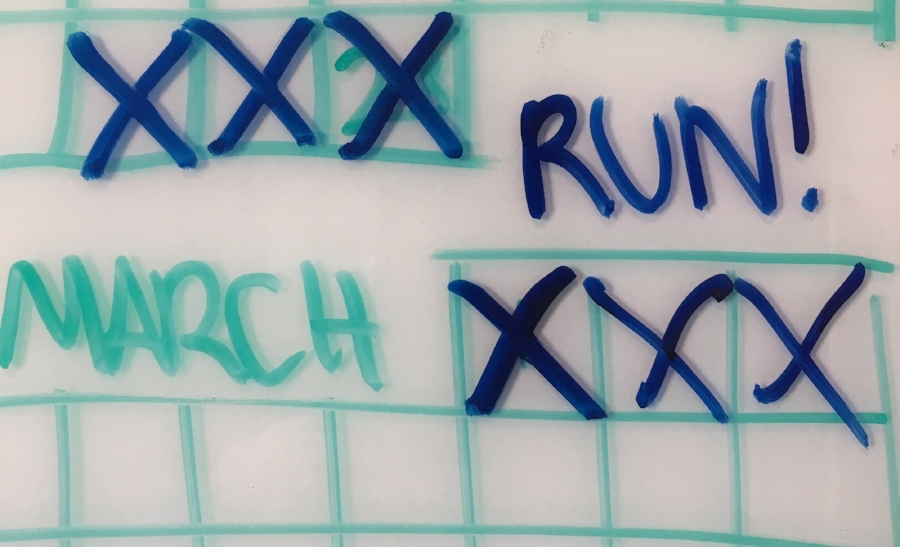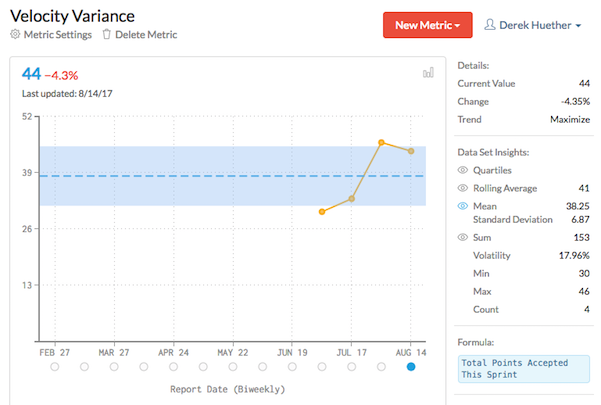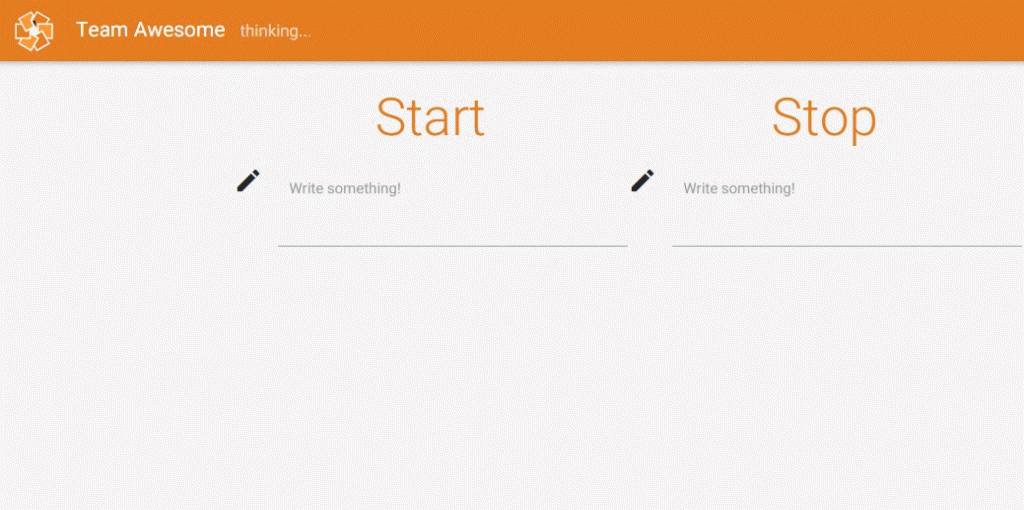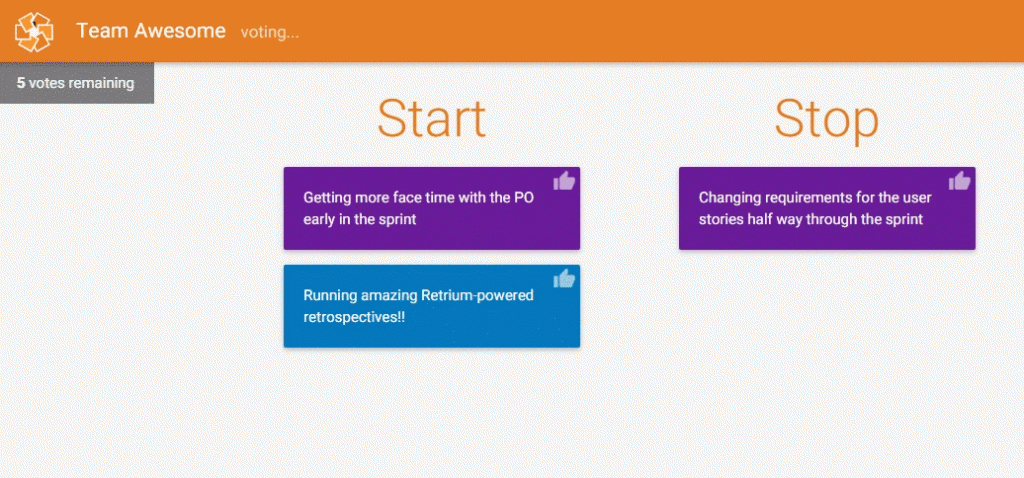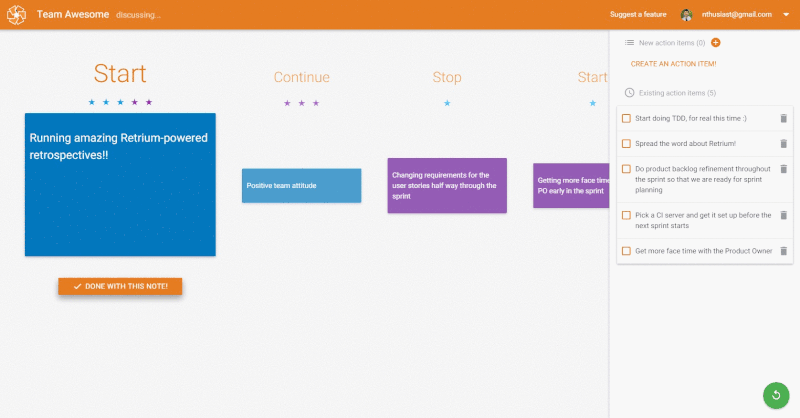I came from a meeting this week where the developers demo'd what they had finished in the last 2 weeks. Due to the pandemic, the meeting was held via Zoom. Every developer (with the exception of one) would ask if people could see their screen. We would then wait 5-10 seconds in silence, as people would either give a thumbs up or do nothing.
Working in Quarantine Week 3
What's it like, now that we're on our third week of quarantine? Has it been awesome, allowing us more time than we could have ever hoped for with spouse and family? Was it pretty awesome at the beginning but now it's getting kind of old? Or, are we looking for an exit!? Dave Prior and I offer tips on how to not totally lose your $h!t while we all continue working from home.
My first week at Atlassian
We need more good habits
Never Break The Chain
With an ongoing quest to be as productive as possible and continue forming good habits, I decided to test a new strategy this last week. It's called “never break the chain”.
Years ago, comedian Jerry Seinfeld shared the biggest secret of his continued success. When Seinfeld was a new television show, Jerry Seinfeld was still a touring comic. He said the way to be a better comic was to create better jokes and the way to create better jokes was to write every day. Specifically, each January, he hangs a year-at-a-glance calendar on a prominent wall of his office, and for every day that he writes new material, he gets to mark a big “X” over that date. After a few days, a chain of Xs begins to form. The goal is to NOT break the chain, and write every single day.
Keep at it and the chain grows longer every day. You'll like seeing that chain, especially when it stretches past a few weeks. Your only job next is to not break the chain.
The goal of writing every day for a year, in the case of Jerry Seinfeld, sound impossible. But, if you can just focus on the single daily goal of "write something today", it becomes much more attainable.
Not only does this approach program the body and mind to do something daily, it also motivates you to continue that long string of Xs. If you don't do your goal one day, you don't get to draw the X. That pressure could be just enough to keep you going.
It doesn't particularly matter what your goal is. It can be anything, as long as you're actively and routinely pushing yourself. Daily action builds habits. It gives you practice and will make you an expert in a short time. If you don't break the chain, you'll start to spot opportunities you otherwise wouldn't. Small improvements accumulate into large improvements rapidly because daily action capitalizes on previous improvements.
As I noted in a previous blog post, to be productive you need 3 things: A system, ritual, and habit.
System: Never Break The Chain
Ritual: Mark X on calendar for every day you accomplish your task
Habit: Complete your task every day without breaking the chain
Knowing your metrics
velocity variance
Know your metrics and the behaviors they drive
Everyone at your company should understand which metrics drive the business, and what behaviors they encourage. That's what Joe Nigro, CEO of energy company Constellation, said in a 2016 Harvard Business Review article. He went on to say, “Everyone needs to know how each metric fits into the big picture…why and how we’re measuring something, and how it’s relevant to performance.”
More directly, I would say metrics should capture the changing environment of your business so you can make informed decisions. But how do you know your metrics are any good?
Encouraging behaviors
If you ask your fellow employees which metrics drive the business, would they know? Would they care? I believe their jobs should depend on them caring, though measuring that would be difficult. If they are unwilling to do their part, perhaps they should "help" some other company. Everyone should be held personally accountable to understand what helps drive the business and how they can help. If they knew what the metrics are, how could it change their behavior (in a positive way)?
Metrics executives may be thinking about
From an executive level, I can only imagine every CEO (from Joe Nigro of Constellation to your own) start by thinking about these metrics:
Topline revenue - Money made from selling goods or services
Customer retention - Attracting the right customer, getting them to buy, buy again, buy in higher quantities or at higher rates.
Customer acquisition cost - The total cost associated with acquiring a new customer, including all aspects of marketing and sales.
Gross margin - Calculated as a company's total sales revenue minus its cost of goods sold, divided by the total sales revenue, expressed as a percentage.
Overhead costs - fixed costs that are not dependent on the level of goods or services produced by the business, such as salaries or rents being paid per month.
I hope executive management will help employees understand the metrics that drive the business and why they are important. I hope the employees will internalize these metrics and consider ways to help the company increase revenues, widen margins, or control costs.
One step deeper into the weeds
From a productivity level, be it manufacturing or software development, I think the staff (and the executives) need to understand (and improve) the system of delivery. To this, if executive management doesn't know these productivity numbers, then how can they know when they are making unreasonable requests of the system? A system of delivery in a black box and executives in an ivory tower are not a good combination. A dissatisfied staff can put your company at serious risk, while on the other hand, a satisfied and productive staff can help drive the business.
Cycle time - The total time from the beginning to the end of your process.
Lead time - Starts when a request is made and ends at delivery.
Utilization - 100% being the maximum, it's the act of making practical and effective use of people or things
Throughput - The amount of material or items passing through a system or process. What did you get done or delivered?
Cost of Delay - The means to calculate and compare the cost of not completing something now, by choosing to do it later.
I hope everyone will think of ways to shortening cycle and lead times while maintaining or increasing throughput. If maximum utilization is how you make the greatest topline revenue, how do you reach that utilization level without breaking your people or machinery?
Another step deeper into the weeds
From an individual level, I believe we are truly personally accountable. Let's ask the first two questions from this post again. Which metrics drive the business? What behaviors do they encourage?
Commitment/Completion Ratio - What have I personally committed to? Am I meeting that commitment?
Throughput (Velocity) Variance - Given the things that I've recently completed, am I predictable? Can others make commitments, based on what I do?
Confidence Score - How confident am I that I will actually keep the commitment I made?
I hope individuals will be honest about what they think they can do in a given period of time. I hope they will be honest with their coworkers and with management if they don't think they can keep a commitment.
What behaviors do you think metrics encourage?
Image Source: Calculated Velocity Variance via Notion [UseNotion.com]
Leading and Lagging Indicators
Product Review for Distributed Retrospectives
On a monthly basis, I see at least one distributed retrospective. Sure, I would prefer to do it onsite with participants, on a wall with sticky notes, but that's not always an option. So, what can we do about it? Not having the retrospective is not an option. Instead, I want to find a tool that has a low level of friction, is purpose built, and reasonably priced. Sounds like it's time for a product review! Over the last few years, I've used several products for distributed retrospectives. Each of them sucked in their own special way. So, I thought about testing Retrium. My first thoughts are I like it!
Currently, they have Five major techniques (4L's, Mad-Sad-Glad, Start-Stop-Continue, Lean Coffee, and Went Well, Didn't Go Well) customized for the distributed experience. With that, I focused my attention on the "Start, Stop, Continue" technique.
Steps I used for the product review:
Step One: Choose a retrospective format. I picked Start, Stop, Continue.
Step Two: To start the retrospective the facilitator should explain how the technique works. He or she should then tell the team the timebox for the retrospective (30-60 minutes, depending on the size of the team). In Retrium, you can set a timebox time for each step or the overall retrospective. I like to set a timer for each step.
Step Three: Ideation. The facilitator should tell participants the timebox for this phase (10-15 minutes should be enough). Participants will then start entering ideas on the board, under the respective heading (Start, Stop, Continue). As the participants enter ideas, the text will not be visible to other participants (until the grouping phase). I like this features, as keeping ideas private will help ensure participants aren't biased by each other's ideas. When the timebox expires, we move onto the grouping phase. If people are full of ideas, the facilitator can extend the timebox timer.
Step Four: Grouping. The facilitator then chooses to advance to the idea grouping phase. I'd recommend the facilitator inform the participants that once you move on to the Group phase, you will not be able to return to the previous phase. Since ideas will likely be related (or even identical), participants should group items into logical themes. Participants can label the logical groups on the screen.
Step Five: Dot Voting. The facilitator then chooses to advance to the voting phase. Again, I'd recommend the facilitator inform the participants that once you move on to the Voting phase, you will not be able to return to the previous phase. As noted earlier, each one of these phases can be timeboxed with a timer feature located on the screen. In my retrospective, participants had 5 votes they could cast against the groups. After voting is complete or the timer expires, the facilitator advances the retrospective to the Discussion phase.
Step Six:Discussion. This is where I believe you are going to get the most benefits from this product. In the discussion phase, only one idea group at a time will be displayed. Here, you will create action items. When you're ready, choose the next topic (group). Add more action items to your Action Plan. You can then choose to review the action plan or end the retrospective. This is by far the step most retrospectives fail at. No action plan is easily maintained and worked.
Retrospective History and Action Plan: Now that the retrospective is over, you can go back and look at previous retrospectives and more importantly, have an ongoing action plan of improvement.
So, is Retrium worth the cost? At the time of this blog post, 1 team room was $49 a month.
You'll get the following:
- Access to all retrospective techniques
- Run an unlimited number of retrospectives
- Invite an unlimited number of users
- Create and track action plans
- View your retrospective history
Is it worth it? I recommend you check out this ROI calculator and dynamically calculate your return on the investment. If you can save your team just 30 minutes a month, through improvements, the product pays for itself.
I would definitely recommend this product!
Full disclosure: I have no financial relationship with Retrium. However, I do know a few of the people there.

